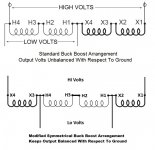Rick Finsta
Stainless
- Joined
- Sep 27, 2017
I got my machine back up and running with a buck/boost taking it from 242V to 209-211V on the input side of the PT380.
Now, when the spindle decelerates, it will sometimes kick the Phase Perfect into some kind of error mode and turns off the machine control (it appears to be kicking out a leg of the 3-phase). The spindle then coasts to a stop. If I reset the breakers everything fires up no problem.
WTF?
Now, when the spindle decelerates, it will sometimes kick the Phase Perfect into some kind of error mode and turns off the machine control (it appears to be kicking out a leg of the 3-phase). The spindle then coasts to a stop. If I reset the breakers everything fires up no problem.
WTF?


